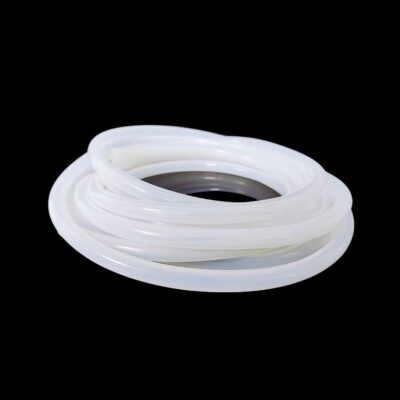
10′ of 1/2″ ID x 3/4″ OD High Temp Silicone Tubing
JUNZHIDA 1/2″ ID Silicone Tubing, Food Grade 1/2″ ID x 3/4″ OD 10 Feet Length Pure Silicone Hoses High Temp for Home Brewing Winemaking
More InfoHighlighted Features
- Silicone tubing size: 1/2" ID x 3/4" OD; length: 3meters(10 ft).
- Silicone hose is made of FDA and 3A sanitary standards silicone rubber which is high quality, flexible and resistant to high temperatures.
- Insulates extreme heat and cold, works from -100°f to +500°f; It can work under mashing, boil temps, boiling wort, hot water, etc. UV resistant, gases and moisture resistant.
- Silicone rubber tubing is great for homebrew and beer line, kegerator, wine making, milk and food handling and processing, pumps,siphoning, draining, aquaponics and water/oil change.
- After-sale service: if you have any questions with the product, please feel free to contact us. We provide refund guarantee or replacement.
Safety Note: Always use caution when handling hot items or ingredients and always read and follow manufacturer directions.
Make sure the components you use are compatible and rated for your intended application. Contact manufacturer with questions about suitability or a specific application. Always read and follow manufacturer directions.
JUNZHIDA 1/2″ ID Silicone Tubing, Food Grade 1/2″ ID x 3/4″ OD 10 Feet Length Pure Silicone Hoses High Temp for Home Brewing Winemaking – affiliate link, note that multiple variations of this product may be available, as such a different version may appear at this link
This post contains affiliate links. We may make a commission when you use our Amazon links. This will never cost you extra. Thank you for supporting Homebrew Finds!
Price, promotions and availability can change quickly. Check the product page for current price, description and availability. ssprod:B0CL49KV94:anchor
